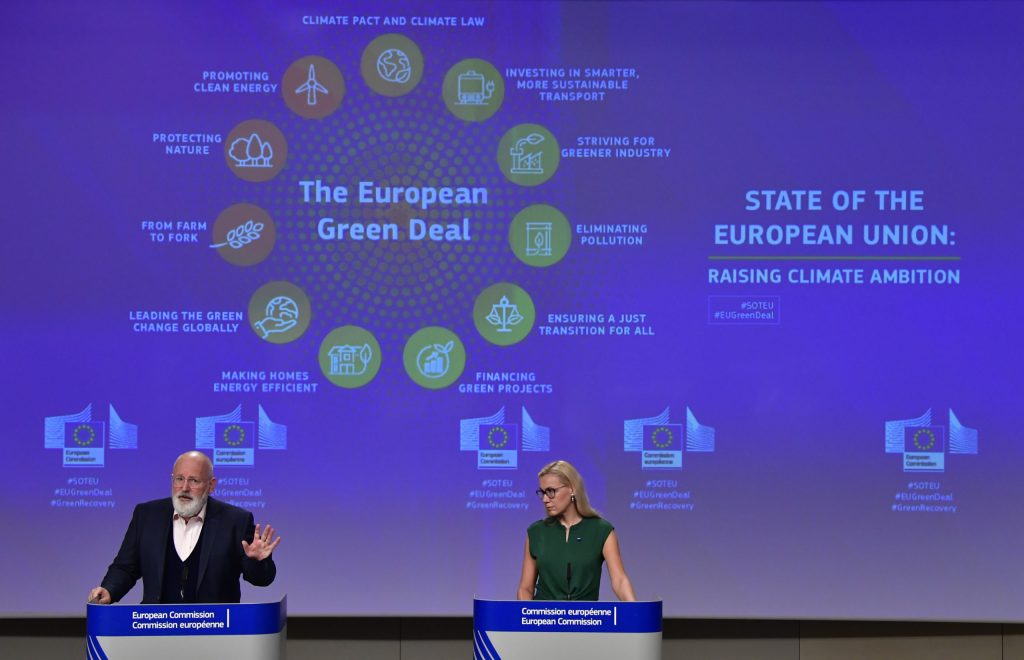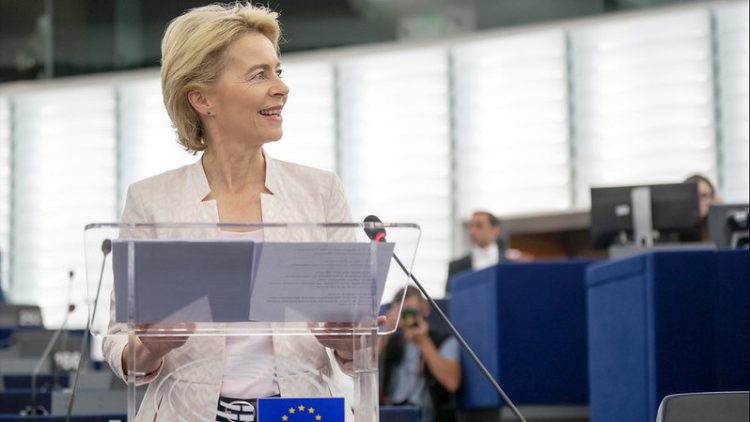The European Green Deal represents one of the most ambitious environmental and economic initiatives undertaken by a major global economy. Launched by the European Union in December 2019, the Green Deal is a strategic plan aimed at making Europe the first climate-neutral continent by 2050. This transformation focuses on decarbonizing sectors like energy, transportation, and agriculture, with investments in renewable energy, green technologies, and infrastructure. However, the implications of the European Green Deal stretch far beyond Europe’s borders. Its policies have the potential to reshape global economic growth, particularly within the energy sector, and influence international capital flows. In this article, we will explore how the European Green Deal affects global economic growth, guides capital flows, and how global investors can capitalize on the opportunities presented by Europe’s green transition.
The Impact of the European Green Deal on Global Economic Growth, Particularly on the Energy Market
The European Green Deal is not just an environmental strategy; it is also an economic one. With sustainability at its core, the Green Deal seeks to reduce carbon emissions across various sectors, including energy, transportation, and industry. It is set to have a profound impact on global economic growth, particularly in the energy sector, which has historically been one of the largest contributors to carbon emissions.
1. Shaping the Global Energy Transition
A key pillar of the European Green Deal is its ambition to transform Europe’s energy system, aiming for a low-carbon, renewable-driven energy market. The European Union plans to cut its greenhouse gas emissions by 55% by 2030 compared to 1990 levels. To achieve this, the EU is investing heavily in renewable energy sources like solar, wind, and hydroelectric power, as well as in hydrogen and other forms of clean energy. These investments are not just changing Europe’s energy landscape; they are also influencing global energy markets.
As the European Union seeks to phase out fossil fuels and reduce reliance on carbon-heavy energy sources, this will spur innovation in the global energy sector. Companies worldwide will be motivated to develop green technologies, such as energy storage solutions, carbon capture and storage (CCS) technologies, and cleaner manufacturing processes. With Europe being a major energy consumer, its demand for renewable energy technologies will drive production capacity and reduce costs globally, potentially accelerating the global energy transition.
The ripple effects of Europe’s green transition will likely prompt other regions to follow suit, encouraging a global shift toward cleaner energy sources. In the long term, the global energy market will become less reliant on fossil fuels, reducing energy price volatility caused by oil and gas dependency. Moreover, Europe’s push for energy efficiency and reduced emissions will contribute to stabilizing climate change, ultimately providing a more predictable environment for global economies.
2. Disruption of Traditional Energy Markets
While the European Green Deal offers vast opportunities, it also presents challenges, especially for traditional energy markets. Oil, coal, and gas are still dominant energy sources globally, and Europe’s transition away from these fuels could disrupt global supply chains. Countries and regions that are heavily dependent on fossil fuel exports may see a decline in demand, leading to significant economic shifts.
For example, many nations in the Middle East and North Africa, whose economies rely on oil exports, may face financial pressures as Europe reduces its dependence on fossil fuels. Similarly, Russia, which is a major supplier of natural gas to Europe, may experience economic consequences as the EU seeks to diversify its energy sources. These shifts will force traditional energy producers to adapt, diversify their economies, or look for new markets outside of Europe.
However, the EU’s green transition also presents opportunities for energy producers. As demand for cleaner energy rises, fossil fuel producers that invest in green technologies can potentially transition their business models and remain competitive in the global energy market. Countries that are proactive in shifting to renewable energy production can capture a larger share of the growing global market for clean energy.
3. Global Economic Growth and the Green Energy Economy
The European Green Deal is also likely to have a positive long-term effect on global economic growth, particularly as green energy investments increase. According to research by the European Commission, investments in green technologies and sustainable infrastructure are expected to generate significant job creation, boost innovation, and spur economic activity. This could lead to an economic multiplier effect, where the growth of one industry (such as renewable energy) leads to expanded growth in other sectors, including manufacturing, technology, and construction.
Moreover, the global shift to green energy is likely to create new markets and industries. For instance, electric vehicles (EVs), which are central to the Green Deal’s decarbonization efforts, represent a rapidly growing industry with significant investment potential. By encouraging the development and adoption of electric vehicles and associated infrastructure, Europe is leading the charge in building a global EV market. This transition will stimulate growth in various industries, from battery production to charging stations and sustainable manufacturing practices.
The Green Deal’s focus on energy efficiency and sustainability will also foster the development of new economic sectors. Areas such as sustainable agriculture, green building construction, and circular economy practices will attract substantial investments. Consequently, these emerging sectors will contribute to global economic diversification and foster more sustainable growth worldwide.
How Europe’s Green Investments Are Guiding Global Capital Flows
Europe’s Green Deal is not just shaping the continent’s future; it is also guiding the global flow of capital. As governments, businesses, and investors worldwide recognize the long-term benefits of green investments, capital is increasingly being directed toward sustainable projects. Europe’s Green Deal is positioning itself as a key leader in this movement, driving investments into green technologies, renewable energy, and sustainable infrastructure.
1. The Growth of Sustainable Investment Funds
One of the most significant ways the Green Deal is influencing global capital flows is through the growth of sustainable investment funds. These funds are designed to support projects that promote environmental sustainability and combat climate change. The European Union, through its Green Deal, is encouraging private investors and financial institutions to direct capital toward green technologies and infrastructure. The EU’s commitment to a green economy is helping to create a robust market for green bonds, renewable energy projects, and carbon offset initiatives.
As investors look for opportunities to capitalize on Europe’s green transition, there has been an increasing demand for green investment products. This trend is not limited to European investors; global capital flows are increasingly directed toward European green initiatives, attracted by the region’s ambitious sustainability goals and attractive investment opportunities. The EU’s Green Deal is helping to establish Europe as a leader in the global green economy, which in turn encourages other regions to invest in sustainable projects.
2. Shifting Investment Patterns in the Energy Sector
The Green Deal’s emphasis on renewable energy and carbon neutrality is reshaping the global energy investment landscape. With Europe pushing to reduce its carbon footprint, investors are increasingly shifting their portfolios toward renewable energy sources, energy storage solutions, and energy efficiency technologies. This shift is not limited to Europe; global investors are also recognizing the potential for high returns in the green energy sector.
Renewable energy projects, particularly solar, wind, and hydrogen energy, are receiving substantial investments. As the cost of these technologies continues to decrease, more capital is flowing into the development and deployment of clean energy projects. Europe’s Green Deal is helping to de-risk these investments by providing policy support and incentives for green energy projects, making them more attractive to both private and institutional investors.
As global capital flows into Europe’s green energy sector, it also has the potential to trigger similar investments in other regions. Investors are looking for opportunities to diversify their green portfolios, leading to increased capital flows into renewable energy projects worldwide. This has the potential to accelerate the global transition to a low-carbon economy, especially as countries outside Europe look to align with international climate goals.

3. Corporate Sustainability Initiatives and Investor Demand
The European Green Deal is also influencing global corporate strategies. European companies, particularly those in energy-intensive sectors, are increasingly investing in green technologies and sustainable practices to comply with the Green Deal’s regulations and to remain competitive in a changing global market. This corporate shift toward sustainability is attracting global investors who are looking for companies with strong environmental, social, and governance (ESG) profiles.
Global investors are increasingly factoring ESG criteria into their investment decisions. Europe’s Green Deal is serving as a blueprint for companies worldwide, demonstrating that sustainability is not just a regulatory requirement but a business opportunity. Investors are more likely to direct capital to companies that are proactively addressing environmental issues, reducing carbon footprints, and adopting green technologies. This global shift in investment priorities is helping to drive the growth of green industries and sustainable business practices worldwide.
How Global Investors Can Tap into Opportunities in Europe’s Green Transition
The European Green Deal is creating a wealth of opportunities for global investors, from renewable energy projects to green infrastructure. By understanding the key components of the Green Deal and how it shapes the global economy, investors can position themselves to take advantage of these opportunities.
1. Invest in Green Energy and Infrastructure
One of the most straightforward ways for global investors to capitalize on Europe’s green transition is to invest in green energy and infrastructure projects. With the EU’s emphasis on renewable energy sources, there is a growing demand for investments in solar, wind, and hydroelectric power. These energy sectors are expected to grow rapidly over the next few decades, creating substantial returns for investors who get involved early.
In addition to energy production, green infrastructure projects—such as electric vehicle charging networks, energy-efficient buildings, and smart grids—represent another promising area for investment. The European Union is providing significant funding for these initiatives, making them attractive opportunities for global investors looking to diversify their portfolios.
2. Focus on ESG Investments
Environmental, social, and governance (ESG) investing has gained significant traction in recent years, and the European Green Deal has accelerated this trend. By investing in companies and funds that meet ESG criteria, global investors can tap into the long-term growth potential of sustainable industries. In particular, companies involved in clean technologies, green energy, and sustainable agriculture are poised for significant growth as they align with Europe’s Green Deal goals.
Investors can look for ESG-compliant funds, exchange-traded funds (ETFs), or individual companies that are prioritizing sustainability. As Europe continues to lead the way in green policies, ESG investments linked to the Green Deal will offer long-term returns while contributing to the global transition to a low-carbon economy.
3. Take Advantage of Green Bonds
Green bonds, which are used to finance projects that have positive environmental impacts, are becoming an increasingly popular investment vehicle. The European Union has been a pioneer in the issuance of green bonds, and this market is expected to grow rapidly. Investors can tap into the green bond market by purchasing bonds issued by European governments or companies involved in sustainable projects. Green bonds offer stable returns while supporting Europe’s ambitious sustainability goals.
Conclusion
The European Green Deal is one of the most significant initiatives of our time, not only for Europe but for the entire world. It is shaping the future of global economic growth by driving the transition to a low-carbon economy, particularly within the energy sector. The deal is guiding capital flows toward green investments and providing opportunities for global investors to participate in the green transition. By understanding the Green Deal’s implications and recognizing the emerging opportunities, global investors can position themselves to benefit from Europe’s green future while contributing to a more sustainable world.





























